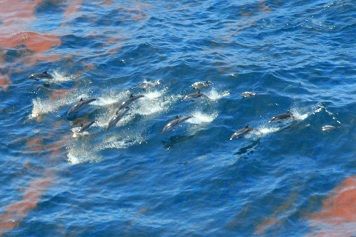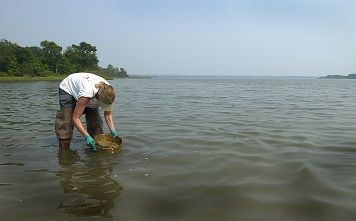Oil Spill Assessment and Restoration
Oil spills—ranging from just a few gallons to millions of barrels—occur in the U.S. all too often. In fact, NOAA responds to up to 150 oil spills nationwide each year. The Deepwater Horizon oil spill in the Gulf of America (formerly Gulf of Mexico) is an example of the extensive environmental and economic impact an oil spill can cause. It also demonstrates how important a healthy environment is for a sound economy. NOAA's Office of Response and Restoration (OR&R) leads environmental response, assessment, and restoration following oil spills in our nation’s coastal waters. For more than 25 years, we have worked cooperatively with other trustees and polluters to assess injuries to natural resources and restore habitats following oil spills. When we restore natural resources we are also investing in communities, by creating construction jobs for local economies and providing better opportunities for residents and visitors to access and enjoy the coastal and marine environment.
What is a Natural Resource Damage Assessment?
The Oil Pollution Act of 1990 provides for a Natural Resource Damage Assessment (NRDA) to determine the type and amount of restoration needed to compensate the public for the environmental impacts of oil spills. NOAA developed the Damage Assessment, Remediation, and Restoration Program (DARRP) to carry out the NRDA process. OR&R is a central component of DARRP. We hold polluters financially accountable for the cost of assessing and restoring the environment. Please visit the DARRP website for information related to NRDA for specific oil spills.
How Does NOAA Conduct a Natural Resource Damage Assessment?
Working in cooperation with states, tribes, and federal agencies, NOAA assesses injuries to natural resources and restores coastal and marine habitats. Our trust resources include marine and migratory fish, endangered species, marine mammals, and their habitats. The NRDA process involves a team of scientists, economists, restoration experts, and attorneys who:
- Determine what parts of the coastal and marine environment were injured.
- Collect data to assess threats and injuries to natural resources.
- Quantify injuries to the environment and lost public uses, and
- Develop a restoration plan to compensate for environmental impacts and associated public losses.
What Happens When the Natural Resource Damage Assessment is Completed?
The NRDA process enables us to determine the amount and type of restoration needed to compensate for natural resource injuries. We can then select projects aimed at returning the environment to the condition it was in before the spill occurred. Because an oil spill can impair the public's enjoyment of affected areas, we also develop projects that improve access to the water and other coastal resources. Examples of restoration projects include:
- Restoring and creating wetland habitats.
- Enhancing beaches and shorelines.
- Creating oyster reefs and other shellfish habitat.
- Restoring coral reefs and seagrass beds.
- Acquiring, restoring, and protecting waterfowl habitat.
- Removing barriers from rivers to allow fish to reach upstream habitat.
- Constructing boat ramps, fishing piers, and trails to improve recreational access.
 An official website of the United States government.
An official website of the United States government. 

